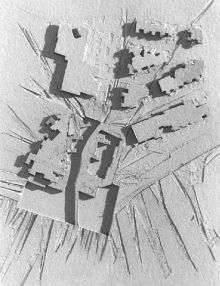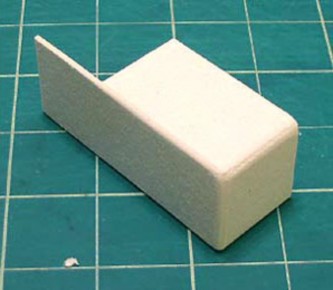Material Use and Disposal Guide
VARIATIONS
Sheets, Rods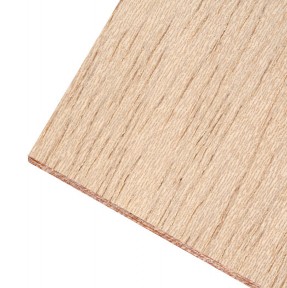
DESCRIPTION
Tan, heavy grained and slightly textured wood.
USES
Balsa wood is easier to cut and lighter than basswood, but much more difficult to make into a good looking model. The very apparent and sloppy looking grain keeps balsa in the realm of mostly massing or sketch models. Because the wood is so light, it also distorts under pressure from anything but the sharpest blade, making clean joins more difficult to make. Can be laser cut.
MANUFACTURE
Trees harvest for balsa wood can be found in northern South America, and 90% of all balsa wood comes from Ecuador. These trees don’t grow in farms, and tend to be harvested directly from the jungle. Balsa wood enjoys a relatively quick regrowth rate of 6–10 years.
NOTABLE INGREDIENTS
Ochroma Lagopus (Balsa Wood Tree)
DISPOSAL
Usable scraps to Reuse Stations, unusable scraps to wood dumpster behind shop. Untreated wood will completely biodegrade without any issue.
SAFETY NOTES
Always be careful when cutting—use a sharp blade. Almost all cuts are best made with multiple, low pressure passes—this reduces the chance of slipping and increases the precision of the cut.
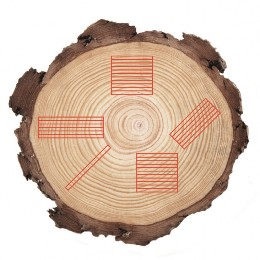
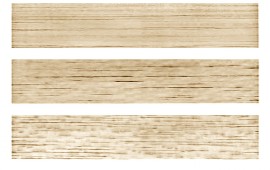
VARIATIONS
Sheets, Rods, Dowels, Structural Shapes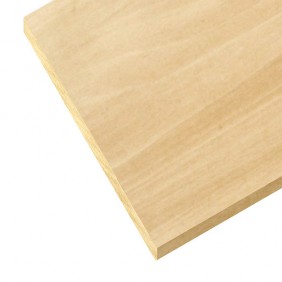
DESCRIPTION
Pale, smooth, fine grained wood.
USES
Excellent modeling material. Basswood accepts all types of glues, especially craft glues, and can be cut by hand at thicknesses up to 1/8”. Cuts with the grain must be carefully made to ensure the blade does not follow the slight curve of the grain instead of the straight edge; cuts against the grain must be scored and made in a number of passes. Can be laser cut.
MANUFACTURE
The American Basswood tree is native to states as far west as Minnesota and as far south as Missouri, stretching all the way to the east coast. The tree becomes mature in 10–15 years at which point it is harvested and cut down to desired sizes, then shipped.
NOTABLE INGREDIENTS
Tilia Americana (American Basswood)
DISPOSAL
Usable scraps to Reuse Stations, unusable scraps to wood dumpster behind shop. Untreated wood will biodegrade without any issue.
SAFETY NOTES
Always be careful when cutting—use a sharp blade. Almost all cuts are best made with multiple, low pressure passes—this reduces the chance of slipping and increases the precision of the cut.

VARIATIONS
A, B, C, D, E, F-Flute, Honeycomb Board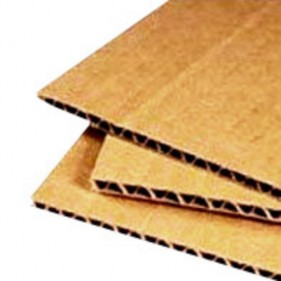
DESCRIPTION
Corrugated sheet lined on one or both sides by at sheets.
USES
Corrugation provides lightweight thickness, ideal for rough topo and massing. Single layers can be removed to signify changes in material or texture. Cross section can signify texture as well. Can be laser cut.
MANUFACTURE
Wood is pulped mechanically and chemically then formed into sheets. Sheets are corrugated by a series of gears and then adhered to at liner sheets with a starch based adhesive.
NOTABLE INGREDIENTS
Wood, Starch Glue, Bleaches
DISPOSAL
100% recyclable: Blue Bins. Flatten boxes and models as much as possible.
SAFETY NOTES
Always be careful when cutting—use a sharp blade. The corrugation makes cutting along the grain easy and cutting against the grain comparatively difficult.
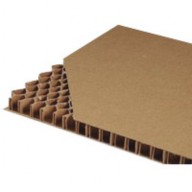
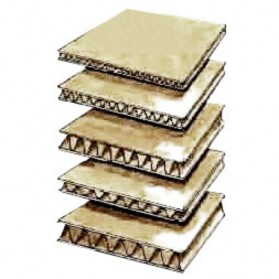
VARIATIONS
Portland, Masonry, Portland Blastfurnace, Fly Ash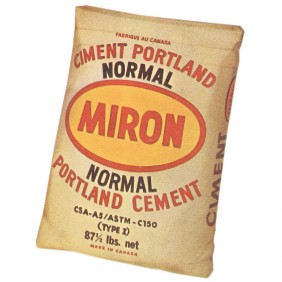
DESCRIPTION
Powder that hardens and binds with the introduction of water; key ingredient in concrete.
USES
Can be used as a scaled modeling material—forms can be made of plexi for a shiny finish or wood for more texture. Can also be used to model full scale details.
MANUFACTURE
Limestone is heated to 1450 degrees celsius, releasing CO2. The result is ground and combined with gypsum and small amounts of other materials. The cement industry is the second largest CO2 emitting industry behind the energy industry.
NOTABLE INGREDIENTS
Limestone, Gypsum, Quartz
DISPOSAL
Re-Use Stations for unused material. Landfill for DRY waste—cured cement creates no environmental damage. DO NOT dispose in sink.
SAFETY NOTES
- If skin comes in contact with wet cement for sufficient duration, chemical burns will occur.
- Contact with the eyes should receive immediate medical attention and thorough flushing.
- Always wear a respirator while using cement; prolonged inhalation of particulate can cause disabling, and eventually permanent lung problems.
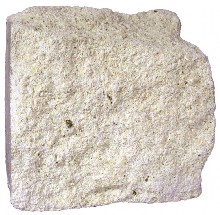

VARIATIONS
Tacky, Sobo, Elmer’s, Wood Glue, PVA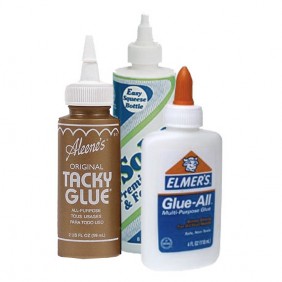
DESCRIPTION
White, thick adhesive that dries in 5 to 30 minutes.
USES
Craft glue is most effective with porous materials: wood, paper, boards, and cloth. It will form a much less brittle bond than super glues, making models more durable. Craft glue is very forgiving as it remains workable for a good amount of time and excess can be easily scraped away for clean looking joins. Drying joins can be held in place by masking tape while work elsewhere on the model can continue. Craft glues are not waterproof, and will not cure in excessively wet or humid conditions.
MANUFACTURE
Craft glues are polyvinyl acetate (PVA) suspended in water—when it is applied, the water evaporates and the PVA hardens. PVA is made from a number of chemical reactions
NOTABLE INGREDIENTS
Polyvinyl Acetate [ethylene, acetic acid, oxygen], Water
DISPOSAL
Place all spent containers at Re-Use Stations.
SAFETY NOTES
These adhesives are generally the least toxic and threatening option. Use these over super glues, cements, and epoxies whenever possible.
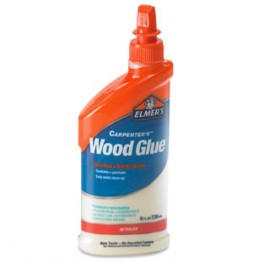
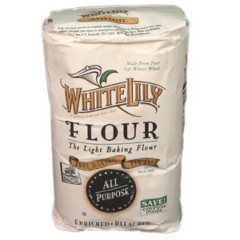
VARIATIONS
Gels, Pastes
DESCRIPTION
Two substances, a ‘resin’ and a ‘hardener’, that cure when mixed together.
USES
Epoxy adhesive forms an extremely strong bond, which makes it excellent in full-scale construction and repairs. Epoxy is an excellent joiner of obscure materials that no other adhesive works on. A palette knife or wood stick should be used to mix and apply.
MANUFACTURE
The ‘resin’ component is an epoxide, the ‘hardener’ a polyamine. Both substances are the result of complex chemical reactions.
NOTABLE INGREDIENTS
Epoxides, Polyamines, Bisphenol A [Volatile Organic Compound]
DISPOSAL
Place all spent containers at Re-Use Stations.
SAFETY NOTES
- Always wear a respirator and eye protection.
- Should either component of the epoxy contact the skin, wash for 10–15 minutes.
- Bisphenol A is a controversial chemical suspected of having negative effects on the brain, increasing breast cancer risk, hampering sexual development, and increasing obesity.
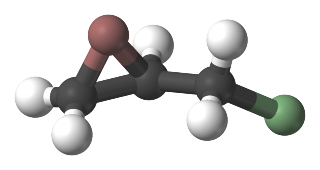
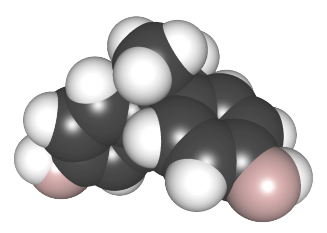
VARIATIONS
Foam Board
DESCRIPTION
Board of varying thickness consisting of foam sandwiched between two flat sheets.
USES
Foamcore is a versatile modeling material, but is difficult to make presentable. It is best used in quick massing studies and in places where it is not visible—such as the filler in a veneered base. Craft glue works well due to its porosity. Foamcore cuts cleanly with a sharp exacto or olfa blade and has no ‘grain’. It can also be used as a backer on which drawings are mounted.
MANUFACTURE
The foam is polystyrene—chemically made from adding alcohols to styrene. Styrene is a by-product of particular petroleum manufacturing methods. Once the polystyrene dries in molds, it is sprayed with adhesive and sandwiched between two sheets of cardstock. The cardstock is manufactured similarly to bleached paperboard.
NOTABLE INGREDIENTS
Cardstock (typ. acid free), Bleach, Polystyrene
DISPOSAL
Place all extra pieces at Re-Use Stations. Foamcore is not recyclable, and polystyrene is notorious for remaining in land fills for hundreds of years without decomposing.
SAFETY NOTES
Foamcore cutting requires a sharp blade—make sure you are cutting against a metal straight edge
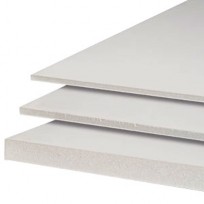
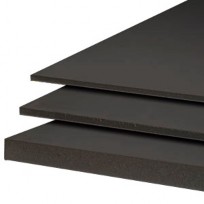
VARIATIONS
Crushed rock, Pea Gravel, Creek Rock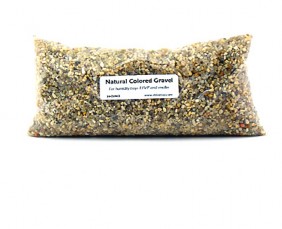
DESCRIPTION
Loose rock
USES
As a medium sized aggregate in concrete, it greatly reduces the amount of portland cement needed.
MANUFACTURE
Gravel is generally mined in open pit mines, often occurring near rivers, where not only habitat destruction but runoff are concerns. Mines located away from rivers and streams, and gravel from crushed rock, are best.
NOTABLE INGREDIENTS
Assorted rock
DISPOSAL
Re-Use Stations for unused material. Otherwise, landfill; gravel is naturally occurring and is does not harm the environment.
SAFETY NOTES
When mixing concrete, always wear proper skin protection and wear a respirator in poorly ventilated areas.

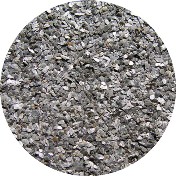
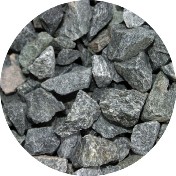
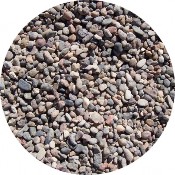
VARIATIONS
Cellulose Based Fiber Wall Board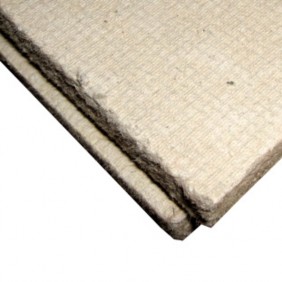
DESCRIPTION
1/2” Board consisting of pressed paper fiber with a subtle square-grid texture.
USES
Though homasote can only easily be cut by power tools, it can be useful for massing or model bases. It is cheap and can be glued with wood or craft clue. Though its edges are rough and messy, homasote cuts very cleanly. Be careful when working with power tools; this material tends to burn if left on a tool for too long.
MANUFACTURE
Homasote is 100% recycled paper product (98% post consumer) and non VOC adhesive pressed at high temperature.
NOTABLE INGREDIENTS
Paper Fiber (usually from newsprint)
DISPOSAL
Place all extra pieces at Re-Use Stations. Homasote is a paper board, which qualifies it for paper recycling.
SAFETY NOTES
Working with paper board in the shop is like working with light wood, take standard power tool precautions.
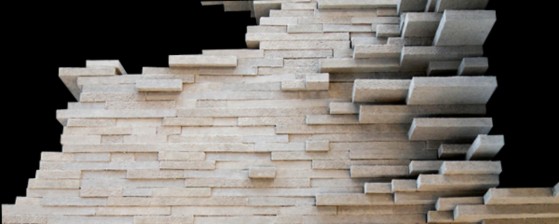
DESCRIPTION
Solid, usually translucent glue sticks are heated with a special gun to produce liquid adhesive.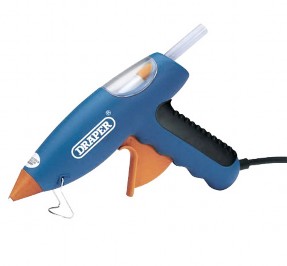
USES
Hot glue is extremely difficult to control in detailed applications such as models. It works best on fabric and foam, and has a rapid curing time.
MANUFACTURE
Hot glues are typically based on one material, though a number of additives exist. This base material is a thermoplastic that must be chemically mixed and created in a heat-intensive process. Once the thermoplastic is made, additives enter the mix, and the batch cools in stick shaped molds.
NOTABLE INGREDIENTS
Ethylene-vinyl acetate
DISPOSAL
Re-Use Stations for unused sticks. Also Re-Use Stations for glue material to be disposed; glue sticks may contain hazardous chemicals.
SAFETY NOTES
The tip of the glue gun is significantly hotter than the glue coming out of it. Touching the glue itself will sting but touching the gun tip will burn.
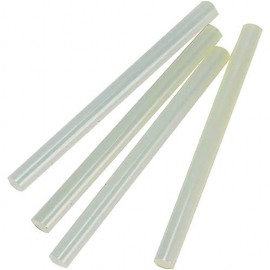
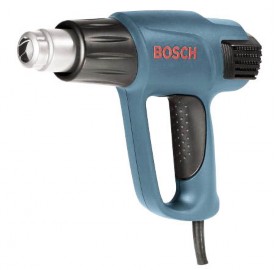
VARIATIONS
Finished, Rough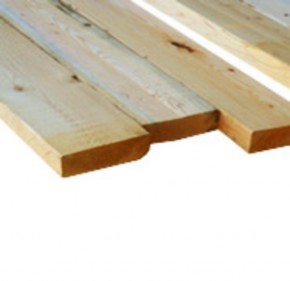
DESCRIPTION
Wood boards.
USES
For framing heavy model bases and constructing almost any furniture piece. The variety of dimensions lumber comes in makes it very flexible.
MANUFACTURE
Trees can be harvested from forests or tree farms, which are then stripped and shipped to processing facilities as logs. Logs are cut to dimension in the most efficient way possible, with scrap wood going to various other manufacturing processes. Cut lumber then dries, is sent to a planar to smooth and square surfaces.
NOTABLE INGREDIENTS
Pine, Fur, Spruce
DISPOSAL
Usable scraps to Reuse Stations, unusable scraps to wood dumpster behind shop. Untreated wood will biodegrade without any issue.
SAFETY NOTES
Lumber should be cut in the shop. Follow all precautions associated with the particular tools used in the shop.


DESCRIPTION
Thin, dark brown wood board with no apparent grain direction.
USES
Masonite can be used for a smooth and cheap drawing board or desktop surface, and can also be cut like any other wood in the shop for model construction. Can be laser cut.
MANUFACTURE
Wood chips and sawdust are blasted with steam until they are elongated into fibers and then formed into boards. Typically, no adhesive is used. Boards may be polished to a smooth, almost glossy finish.
NOTABLE INGREDIENTS
Wood
DISPOSAL
Usable scraps to Reuse Stations, unusable scraps to wood dumpster behind shop. Untreated wood will completely biodegrade without any issue.
SAFETY NOTES
Masonite cannot be cut without shop access. Follow all precautions associated with the particular tools used in the shop.
VARIATIONS
MDF, High Density Fiberboard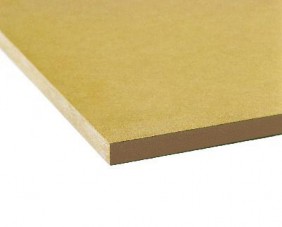
DESCRIPTION
Uniformly colored board consisting of pressed wood particles without any grain.
USES
MDF’s lack of grain and uniform color make set it apart from other wood products. MDF can serve the same utility in model bases or furniture pieces as plywood or OSB. It is a favorite material to be machine routed because of its lack of grain.
MANUFACTURE
Much MDF is manufactured in Europe, though a good amount is produced in New England as well. A number of types of species may be inputs; wood is ground and compacted, softened, and fed into a defibrator. The defibrator further grinds the material in a steam environment. Resin and wax are added before pressing under tremendous pressure.
NOTABLE INGREDIENTS
Woods, recycled paper, bamboo, sawmill cut offs, Formaldehyde (carcinogenic) (unless otherwise noted by producer).
DISPOSAL
Usable scraps to Reuse Stations, unusable scraps to wood dumpster behind shop. Formaldehyde will contaminate the ground.
SAFETY NOTES
- MDF should be cut in the shop. Follow all precautions associated with the particular tools used in the shop.
- Due to its density, when MDF is cut, it produces a lot of sawdust. This dust contains amounts of formaldehyde, a carcinogen that is not desirable to inhale. Always wear a respirator when cutting or sanding MDF.

VARIATIONS
OSB, Waferboard, Sterling Board, SmartPly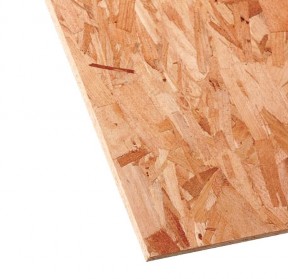
DESCRIPTION
Board consisting of variously oriented wood strands pressed together.
USES
OSB can be used much like plywood, however its appearance tends to be less refined, which is the trade off for its cheaper price. It has a slight directionality, a result of the strands roughly aligning to its long dimension.
MANUFACTURE
Almost all of the raw tree can be used to produce OSB. The production process does not require mature trees and can accept many species of wood. Strands are pressed together with wax and resin and heated in ovens to cure. Most OSB is produced in the US and Canada.
NOTABLE INGREDIENTS
Various Wood Species, Resin and Wax (5%)
DISPOSAL
Usable scraps to Reuse Stations, unusable scraps to wood dumpster behind shop. Untreated wood will biodegrade without any issue, and the types of resins and waxes in OSB are not tremendously detrimental to the environment.
SAFETY NOTES
OSB should be cut in the shop. Follow all precautions associated with the particular tools used in the shop.

VARIATIONS
Chipboard, Museum Board, Butter Board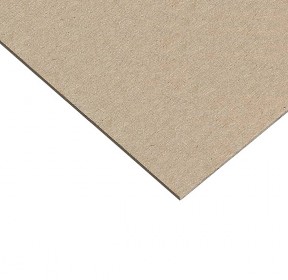
DESCRIPTION
Solid paper sheet material of varying white, grey, and brown tones. Same composition as paper except thicker.
USES
Thin sheets lend themselves to representation of planar elements in models, also used to layer topography. Layers can be peeled away to reveal different tones and texture. Slight grain of pulp lends to an ease of bending in one direction. Can be laser cut.
MANUFACTURE
Wood is pulped mechanically and/or chemically then formed into sheets. Bleach or other brightening agents may be added. Virgin pulp is generally brown, recycled takes on grey due to inks, and bleached board will approach white. Coatings may be added to improve texture or color.
NOTABLE INGREDIENTS
Wood, Bleaches, Starch
DISPOSAL
100% recyclable: Blue Bins.
SAFETY NOTES
Always be careful when cutting—use a sharp blade. Any board higher than single ply will prove difficult to make complex cuts.
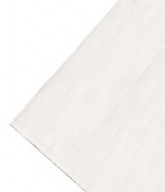
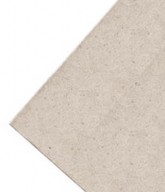
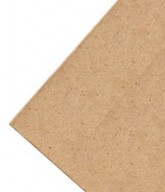
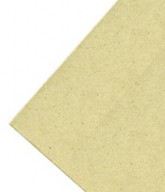
VARIATIONS
Wheat Board, Sunflower Board, Straw Board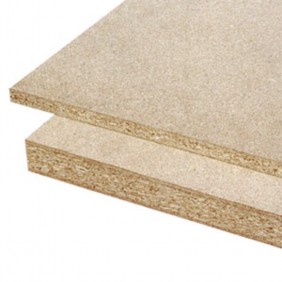
DESCRIPTION
Board of gritty appearance, composed of wood particles.
USES
Particle board has no directionality to it, but certainly has a texture. It has all the utility as other wood board products.
MANUFACTURE
Component wood particles are mixed with resin and the substance is formed into a sheet, usually by spraying. The result is a less dense variation of MDF.
NOTABLE INGREDIENTS
Woods, recycled paper, sawmill cut offs, wheat, Formaldehyde (carcinogenic) (unless otherwise noted by producer).
DISPOSAL
Usable scraps to Reuse Stations, unusable scraps to wood dumpster behind shop. Formaldehyde will contaminate the ground.
SAFETY NOTES
- Particle board should be cut in the shop. Follow all precautions associated with the particular tools used in the shop.
- Not all types of particle board contain formaldehyde, but many do, and a respirator should be worn when cutting and sanding.
- Wheat, straw, and sunflower boards contain no VOCs and are made from agricultural waste.
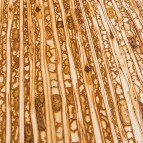
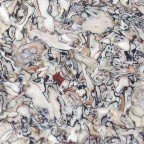
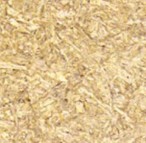
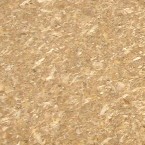
VARIATIONS
Gypsum (Plaster of Paris), Lime, Cement, Model Paste
DESCRIPTION
White powder that becomes a paste when water is added.
USES
Plaster or modeling paste can be used to smooth out topographical models or simply to add a consistent white matte to everything in a model. Blocks of cured plaster can be carved to create subtractive models or molds.
MANUFACTURE
Plaster of Paris is created by heating gypsum to 150 degrees celsius. Lime plaster comes from heating limestone to 850 degrees celsius or more, and depends on the stone’s release of CO2.
NOTABLE INGREDIENTS
Gypsum or Limestone
DISPOSAL
Re-Use Stations for unused material. Otherwise, land ll. DO NOT dispose in sink.
SAFETY NOTES
Some types of plaster may contain trace amounts of substances that irritate the lungs when inhaled.
When plaster is curing, it releases heat; large amounts of curing plaster exposed to the skin for an extended duration can cause severe burns.
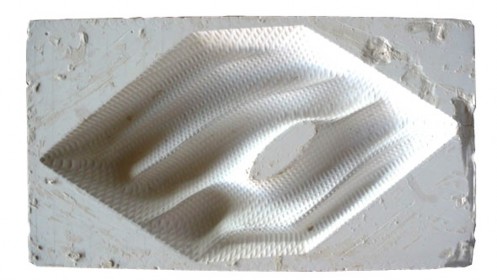
VARIATIONS
Acrylic Cement, Weld-On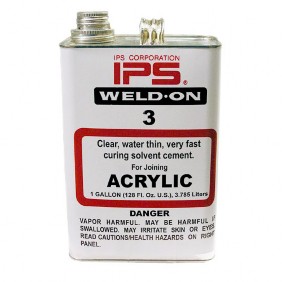
DESCRIPTION
Clear, very sharp smelling liquid.
USES
Plastic adhesive physically joins acrylic, polystyrene, and styrene. These solutions actually melt the plastics, and as they evaporate, the plastics dry together as one. Best applied with a syringe or squeeze bottle. This chemical distorts all plastic surfaces it touches, use sparingly.
MANUFACTURE
Chemical reactions and mixing.
NOTABLE INGREDIENTS
Methylene Chloride, Trichloroethane, Methyl Methacrylate Monomer
DISPOSAL
Place all spent containers at Re-Use Stations.
SAFETY NOTES
- Exposure of any kind is harmful. Wear a respirator, rubber gloves, and eye protection.
- Ingredients in plastic cement can cause: headache, confusion, depression, liver effects, kidney effects, bronchitis, loss of appetite, nausea, lack of balance, visual disturbances. Also may cause cancer.
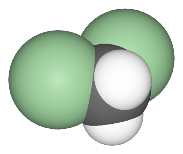

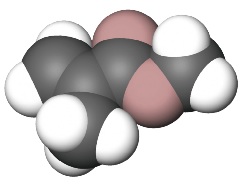
VARIATIONS
Lucite, Acrylic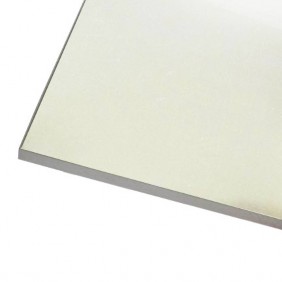
DESCRIPTION
Clear, durable, semi-flexible sheet thicker than 1/16”.
USES
Entire models can be made from lasercut plexi. This is desirable when light or view transmission is desired. Plexi is not forgiving; trace amounts of glue will leave residue, it cannot be cut outside of the shop or laser lab, and tends to fog up in layers with glue. Due to plexi’s crisp and clean look, it is difficult to unify it with any other materials besides styrene or other plastics. Plexiglass can be melted with a heat gun as well. Can be laser cut.
MANUFACTURE
Plexiglass is petroleum based; to produce one unit mass of plexi requires two units mass of petroleum. Sheets are formed in molds heated to a minimum 85 degrees celsius, often exceeding 160 degrees celsius.
NOTABLE INGREDIENTS
Ethyl Acrylate (.1%)(Possibly carcinogenic), Poly(methyl methacrylate) (99%)
DISPOSAL
Place all extra pieces at Re-Use Stations. Plexiglass is not recyclable, and will remain in the land ll for a long time.
SAFETY NOTES
- To avoid inhaling fumes or dust when melting and cutting, wear a respirator.
- Fumes and dust may also irritate the eyes, always wear eye protection when using power tools
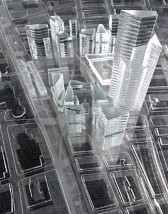
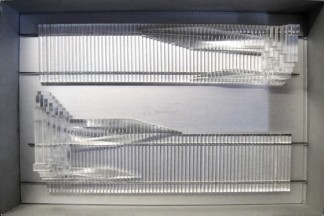
VARIATIONS
Tropical, Hardwood, Softwood, Decorative, Craft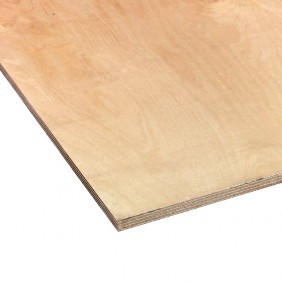
DESCRIPTION
A number of thin sheets of wood adhered together with alternating grain direction.
USES
The wide variety of quality and types of plywood lend
it to be useful for anything from model bases to high quality furniture. Plywood’s unique look in cross section is often used to communicate a directionality in model bases. This cross section can be stacked and individual sheets disappear and only the grain reads through.*
MANUFACTURE
Sheets are produced by rolling a log against a long blade, peeling thin layers off. These layers are then cut, stacked, glued, and baked in a press at 140 degrees celsius. Panels are then recut, sanded, or refinished, depending on type and grade.
NOTABLE INGREDIENTS
Various Wood Species, Urea Formaldehyde (carcinogenic), Phenol
Formaldehyde (carcinogenic)
DISPOSABLE
Usable scraps to Reuse Stations, unusable scraps to wood dumpster behind shop. Untreated wood will biodegrade without any issue, but adhesives contaminate the area.
SAFETY NOTES
- Aside from the craft variety, Plywood should be cut in the shop. Follow all precautions associated with the particular tools used in the shop.
- Plywoods now carry a rating revealing their formaldehyde content. This is the “E-Rating”, with E0 indicating essentially zero formaldehyde.
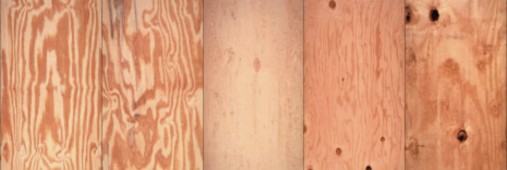
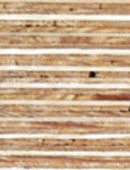
VARIATIONS
Polyurethane, Epoxy, Acrylic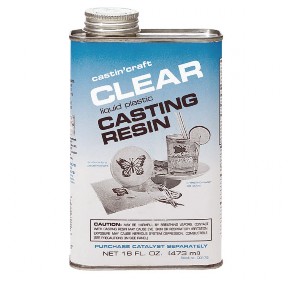
DESCRIPTION
Clear or translucent liquid that dries at room temperature when combined with a curing agent.
USES
The most common casting resins will be polyurethane or acrylic. When casting in a mold, resin should be mixed carefully to minimize air bubbles and the mold should be designed so that gravity naturally pulls the resin into all places. Acrylic resins will dry clear, polyurethane usually opaque, and epoxy clear in thin layers.
MANUFACTURE
The manufacture of synthetic resin varies between types and applications, however the process is always dominated by chemical reactions. Countless additives and catalysts end up in the mix on top of the base formula.
NOTABLE INGREDIENTS
Alcohols, Diisocyanates (known to cause asthma)
DISPOSAL
Place all spent containers at Re-Use Stations.
SAFETY NOTES
- Always wear a respirator and eye protection.
- Do not store resin in areas that can reach excessive temperatures (cars).

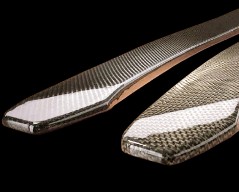

DESCRIPTION
Translucent, gummy liquid usually applied with a brush. Dries quickly, but produces a weak bond.
USES
Rubber cement is very forgiving, allowing adhered materials to be re-positioned without damage. Paper collage type applications are best.
MANUFACTURE
Natural rubber comes from the sap of a rubber tree, and is purified by cooking at high temperature. Synthetic rubber usually is petroleum based. Rubber is pulverized and mixed with the solvents to keep it in liquid form, then packaged. There is no waste in this process, however the solvents are volatile organic compounds.
NOTABLE INGREDIENTS
Rubber, Hexane or Heptane, Alcohol or Ethanol
DISPOSAL
Unused and waste material go to Re-Use Stations. Containers will be disposed of as hazardous waste.
SAFETY NOTES
Solvents quickly evaporate when exposed to air, causing the cement to harden. These solvents are dangerous to inhale; use in well-ventilated areas.
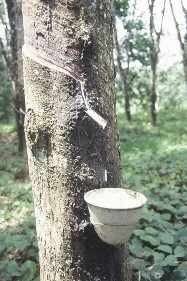

DESCRIPTION
Fine grain rock and mineral particles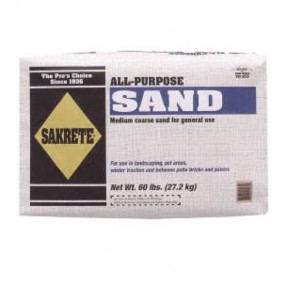
USES
As a fine aggregate for concrete, allows for greatly reduced use of portland cement while maintaining smoothness. Use for full scale detail models calling for concrete.
MANUFACTURE
Sand is dredged from river, lake, and sea beds, raising environmental concerns regarding habitat destruction and unforeseen increases in landslides and oods.
NOTABLE INGREDIENTS
Silica/Quartz
DISPOSAL
Re-Use Stations for unused material. Landfill for waste.
SAFETY NOTES
When mixing concrete, always wear proper skin protection and wear a respirator in poorly ventilated areas.
DESCRIPTION
Fine white powder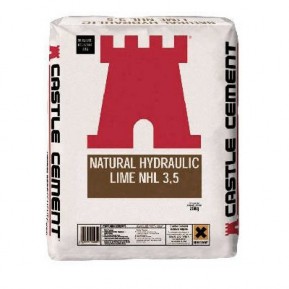
USES
Main component of lime plaster.
MANUFACTURE
Limestone is heated to over 850 degrees celsius, releasing CO2. The resulting material is hydrated to make Calcium Hydroxide, lime.
NOTABLE INGREDIENTS
Limestone, Water
DISPOSAL
Re-Use Stations for unused material. Landfill for waste.
SAFETY NOTES
Always wear proper skin protection and wear a respirator in poorly ventilated areas. Lime is corrosive and can easily burn skin, eyes, stomach, and lungs.
VARIATIONS
Primer, Latex, Textured, Enamel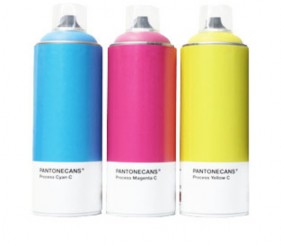
DESCRIPTION
Pressurized cans that spray a mist of paint.
USES
Spray paint is a reliable way to color delicate models evenly. Hold the nozzle 6 to 12 inches away from the target and apply in a circular or back and forth motion. Spraying too much in a single place will cause the paint to run. The further from the target the nozzle is held, the thinner but more even the coat. If you tape off portions not to be painted, holding the nozzle farther away will reduce the possibility of paint bleeding under the tape.
MANUFACTURE
Pigments, solvents, and any additives are mixed in massive vats. The mixture is then precisely dispersed in cans along a conveyor, at which point the propellant is added and the can is quickly closed with a valve.
NOTABLE INGREDIENTS
Titanium dioxide, Pigment Chemicals, Hydrocarbons, Hydro fluorocarbons
DISPOSAL
Re-Use Stations for spent or partially used cans.
SAFETY NOTES
- Always use in well-ventilated areas. If there is little air movement, wear a respirator.
- Not all spray paints contain hydrocarbons, but those that do contribute to smog and generally poor air quality.
- Hydrofluorocarbons (HCFCs), the propellants meant to replace hydrocarbons, are greenhouse gasses.
- Some types of spray paints use CO2 as a propellant, which is a less potent greenhouse gas than HCFCs, but these paints tend to have less reliable pressure and spray density.
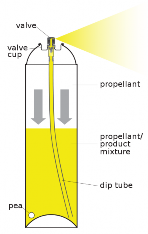
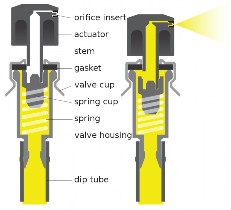
VARIATIONS
Sheets, Rods, Scale Figures, Scale Structural Members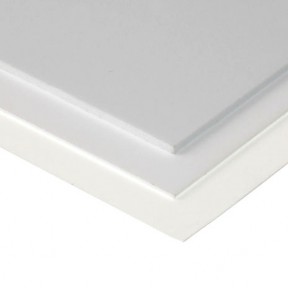
DESCRIPTION
Opaque, usually white, plastic. When in sheets, typically comes in 1/32” and 1/16” thicknesses.
USES
Styrene can be used to achieve that ideally white architectural model. 1/32” sheets can be easily cut and scored by hand and thicker sheets are typically laser cut. Sanding entire sheets before construction allows for inconspicuous sanding away of mistakes and misalignments later on. Can be laser cut.
MANUFACTURE
A chemical cocktail in gas state is mixed in high temperature steam and then passed over a solid catalyst bed (where the gas solidi es into styrene)—the bed’s retention rate is 65–75%. Typical by-products are benzyne and toulene (the latter is the chemical that causes people to get high and sometimes die from concentrated inhalation of paint).
NOTABLE INGREDIENTS
Benzyne, Ethylene, Iron Oxide or Potassium Oxide
DISPOSAL
Place all extra pieces at Re-Use Stations. Styrene is not recyclable, and will remain in the landfill for a long time.
SAFETY NOTES
Styrene is on the EPA’s list of ‘suspected carcinogens’; avoid inhaling dust and fumes with a respirator, and wear eye protection when sanding in close proximity.
Note: Craft stores sell scale structural pieces, and scale people to populate your model.





VARIATIONS
Zap-A-Gap, Krazy Glue
DESCRIPTION
Clear adhesive that dries quickly and powerfully. Has a sharp odor.
USES
Excellent adhesive for precision model making with less porous materials. Porous materials such as wood tend to absorb the glue and pull it away from the joint. When accompanied with an “accelerator”, it can fully cure within minutes. The less glue applied, the faster, cleaner and stronger it cures. For smoother surfaces such as glass, try a pass of fine grit sandpaper before application.
MANUFACTURE
The chemical ingredients of cyanoacrylate are combined through a series of heating and cooling. Another round of heating causes the glue to crack on a molecular level—super glues cure once moisture (in the air) is introduced and the cracks bond together again.
NOTABLE INGREDIENTS
Cyanoacrylate [Ethyl (a hydrocarbon), formaldehyde, cyanide, acetate]
note: a chemical does not necessarily share the properties of its component parts.
DISPOSAL
Place all spent containers at Re-Use Stations.
SAFETY NOTES
- These adhesives are extremely powerful and can potentially adhere eyelids, lips, or fingers together. Remove glue by flushing with large amounts of warm water. It can take several hours for glue to come off of the body.
- Container nozzles often become glued shut; DO NOT SQUEEZE TO FORCE OUT HARDENED GLUE. Insert a pin into the nozzle to knock away obstruction or use an exacto blade to cut off the blocked portion of the nozzle.
- Adhesive vapor can irritate eyes and lungs; wear eye and respiratory protection or keep face at least a foot distance from uncured glue.
DESCRIPTION
Low density paper board with large but fine texture.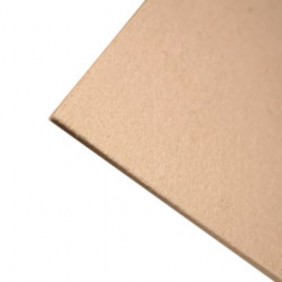
USES
Taskboard is a type of paper board designed specifically for modeling. It can do anything chipboard can do, except is much easier to cut, has a more consistent composition (so edges don’t need to be hidden with miter joints), and more cleanly sands. Can be bent when exposed to steam. Can be laser cut.
MANUFACTURE
Wood from sustainably managed forests is mechanically pulped and formed into sheets. Lighter colors of Taskboard are achieved in a totally chlorine free process.
NOTABLE INGREDIENTS
Wood
DISPOSAL
100% recyclable: Blue Bins.
SAFETY NOTES
Always be careful when cutting—use a sharp blade.
